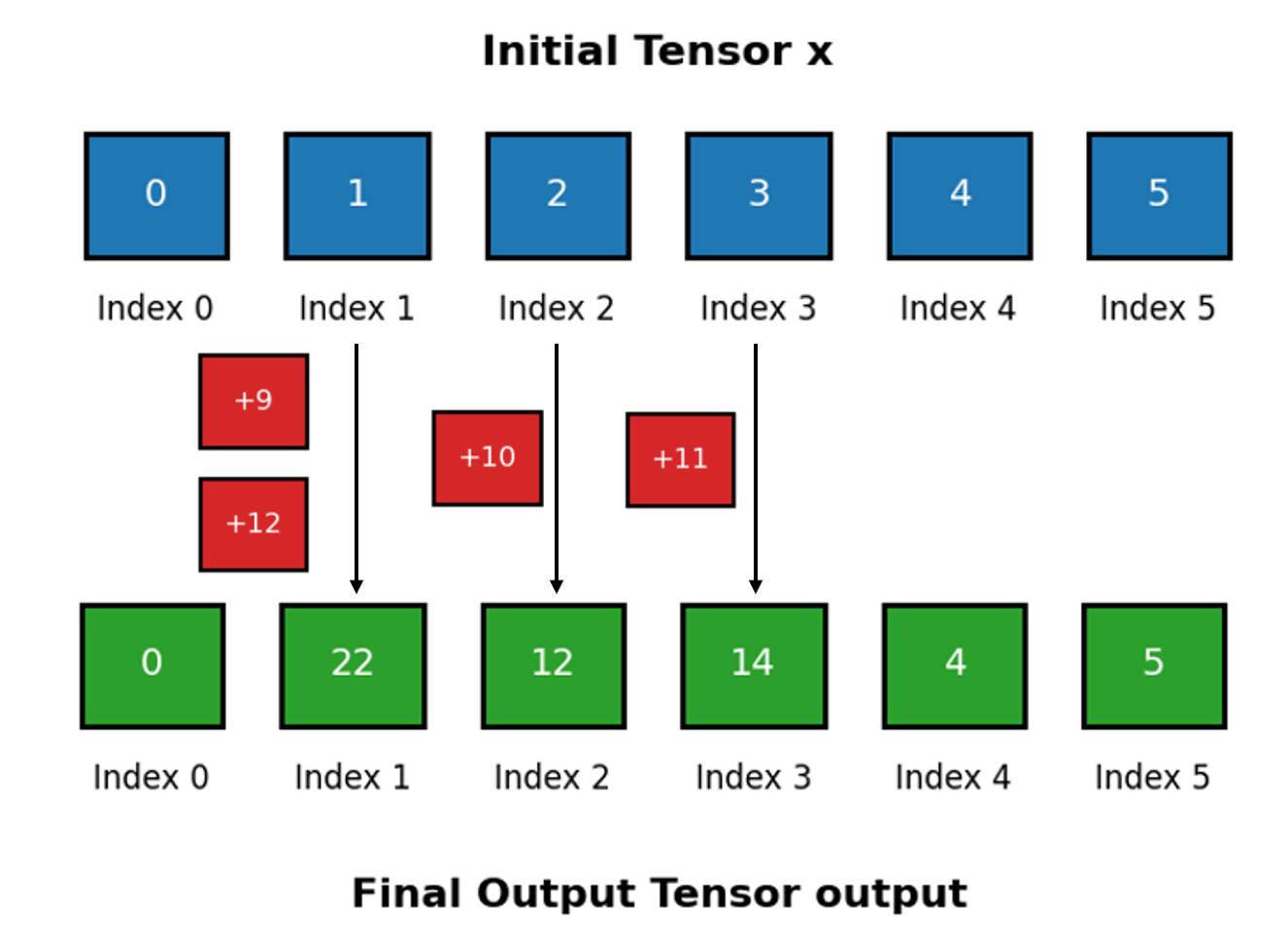scatter_nd_add
通过对 Tensor 中的单个值或切片应用稀疏加法,从而得到输出的 Tensor。
x 是维度为 R 的 Tensor。index 是维度为 K 的 Tensor。因此,index 的形状是 \([i_0, i_1, ..., i_{K-2}, Q]\),其中 \(Q \leq R\) 。updates 是一个维度为 \(K - 1 + R - Q\) 的 Tensor,它的形状是 \(index.shape[:-1] + x.shape[index.shape[-1]:]\) 。
根据 index 的 \([i_0, i_1, ..., i_{K-2}]\) 得到相应的 updates 切片,将其加到根据 index 的最后一维得到 x 切片上,从而得到最终的输出 Tensor。
示例:
- 案例 1:
x = [0, 1, 2, 3, 4, 5]
index = [[1], [2], [3], [1]]
updates = [9, 10, 11, 12]
得到:
output = [0, 22, 12, 14, 4, 5]
- 案例 2:
x = [[65, 17], [-14, -25]]
index = [[], []]
updates = [[[-1, -2], [1, 2]],
[[3, 4], [-3, -4]]]
x.shape = (2, 2)
index.shape = (2, 0)
updates.shape = (2, 2, 2)
得到:
output = [[67, 19], [-16, -27]]
示例一图解说明:
参数
x (Tensor) - 输入 Tensor,数据类型可以是 int32,int64,float32,float64。
index (Tensor) - 输入的索引 Tensor,数据类型为非负 int32 或非负 int64。它的维度
index.ndim必须大于 1,并且index.shape[-1] <= x.ndimupdates (Tensor) - 输入的更新 Tensor,它必须和
x有相同的数据类型。形状必须是index.shape[:-1] + x.shape[index.shape[-1]:]。name (str,可选) - 具体用法请参见 api_guide_Name,一般无需设置,默认值为 None。
返回
Tensor,数据类型和形状都与 x 相同。
代码示例
>>> import paddle
>>> x = paddle.rand(shape=[3, 5, 9, 10], dtype='float32')
>>> updates = paddle.rand(shape=[3, 9, 10], dtype='float32')
>>> index = paddle.to_tensor([[1, 1],
... [0, 1],
... [1, 3]], dtype='int64')
>>> output = paddle.scatter_nd_add(x, index, updates)
>>> print(output.shape)
[3, 5, 9, 10]
